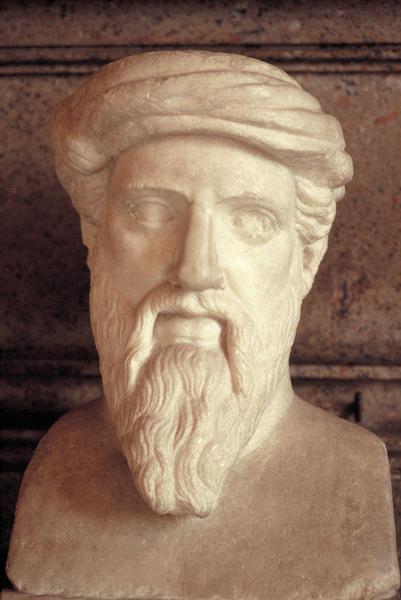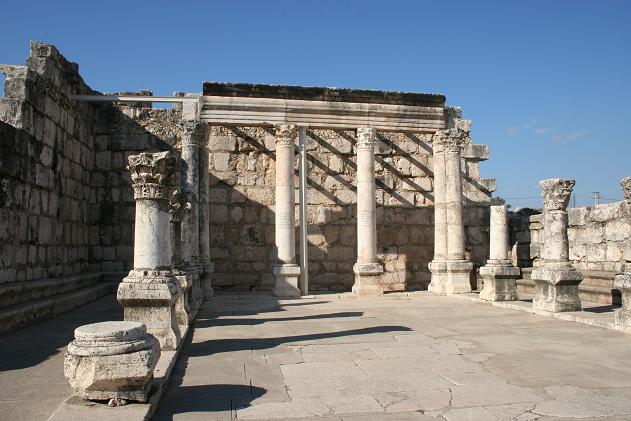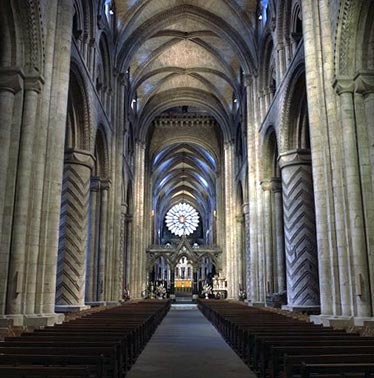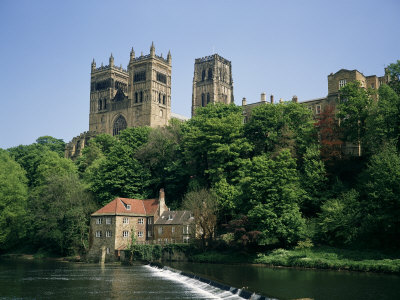How Pythagoras's ideas predicted the existence sub atomic Particles 2,500 years ago. And how only Christian thought could bridge the gap between ancient Greece modern particle physics.
The Pythagorean Prayer of the Cosmos
 The powerful prayer for creativity and inspiration and joy, which is perfected in the Church (Others in series on Divine Office here) Since the ancient Greeks there has been the idea that the happy life is the result of a good life, and a good life is a beautiful life. In the 6th century BC the philosopher Pythagoras (the same one who has a geometric theorem named after him) gathered around him a religious group of ‘Pythagoreans’ who sought to order their lives according to this principle of beauty and order. They drew their inspiration from their observations of the beauty of the cosmos. When viewed in the way of the Pythagoreans, making our actions and work beautiful becomes a guiding principle in life, just like morality. Morality tends to guide by placing boundaries on our activity – it tells us what not to do. This is necessary. Beauty, however, complements this by providing a positive principle of choice. When looking at the broad open field of choices that do not contravene moral law, it opens up new paths and gives us a principle to choose between options which may all appear to be morally neutral.
The powerful prayer for creativity and inspiration and joy, which is perfected in the Church (Others in series on Divine Office here) Since the ancient Greeks there has been the idea that the happy life is the result of a good life, and a good life is a beautiful life. In the 6th century BC the philosopher Pythagoras (the same one who has a geometric theorem named after him) gathered around him a religious group of ‘Pythagoreans’ who sought to order their lives according to this principle of beauty and order. They drew their inspiration from their observations of the beauty of the cosmos. When viewed in the way of the Pythagoreans, making our actions and work beautiful becomes a guiding principle in life, just like morality. Morality tends to guide by placing boundaries on our activity – it tells us what not to do. This is necessary. Beauty, however, complements this by providing a positive principle of choice. When looking at the broad open field of choices that do not contravene moral law, it opens up new paths and gives us a principle to choose between options which may all appear to be morally neutral.
 How do we know what the beautiful choice is? The Greeks noted that the cosmos is both ordered and is beautiful. (The word ‘cosmos’ means in Greek simultaneously order and beauty.) This connection points us to the idea that when we find something beautiful, it is the order within it that is appealing to us. They also noticed, long before the development of modern science, that the rhythms and patterns of the cosmos could be described numerically; and this numerical ordering could become, at least in part, a principle for ordering life. Time and space can be ordered numerically, whether it’s the hours in the day, or the dimensions of a building. Pythagoras is described by Plato as being the discoverer of the numerical order behind beautiful musical harmony and his influence in this area continues to this day.
How do we know what the beautiful choice is? The Greeks noted that the cosmos is both ordered and is beautiful. (The word ‘cosmos’ means in Greek simultaneously order and beauty.) This connection points us to the idea that when we find something beautiful, it is the order within it that is appealing to us. They also noticed, long before the development of modern science, that the rhythms and patterns of the cosmos could be described numerically; and this numerical ordering could become, at least in part, a principle for ordering life. Time and space can be ordered numerically, whether it’s the hours in the day, or the dimensions of a building. Pythagoras is described by Plato as being the discoverer of the numerical order behind beautiful musical harmony and his influence in this area continues to this day.
The Greeks were not the only ones. Long before Christ, the Jewish people ordered time in accordance with these principles: years, months, weeks, days and hours in conformity with the patterns of the cosmos, especially the sun and the moon. They were prompted to do by the revelation contained in Holy Scripture. For the Jewish people the cosmos was a heavenly signpost, created by God, to indicate also the rhythms and patterns and worship. The seven-day weekly cycle, the feast days and the seasonal cycles of their worship conformed to the phases of the moon and the rising and setting of sun. Within each day, there was a seven-fold prayer as well, with the addition of prayer during the night. This structure was the route to joy too. The Psalms especially stress that happiness is the result of following this path. ‘Blessed are the undefiled in the way, who walk in the law of the Lord.’ (Psalm 118:1)
 Greek temple in Segesta, Sicily. Pythagoras lived in Sicily
Greek temple in Segesta, Sicily. Pythagoras lived in Sicily
This ancient pattern was adopted and accommodated into Christian worship (see The Path to Heaven is a Triple Helix). The Christian fathers, especially figures such as Augustine made this connection between the liturgy and the Pythagorean description of the cosmos (The Spirit of the Liturgy by Pope Benedict XVI describes this), to give a sense that that the cosmos was made beautiful to direct our praise to God and both this earthly liturgy and the cosmos are not only in harmony with each other, but each reflects the order of the invisible standard of the heavenly liturgy – the unending praise of God by the saints in heaven. The connection between heaven and earth was made substantial in the Church’s worship, through the Mass. The body and blood of Christ, present under the appearance of bread and wine at the centre of the Mass is the meeting point of all that exists, seen and unseen. In Him all the patterns of order and beauty are embodied, for He is Beauty itself. He is the Creator of the cosmos and it bears the thumbprint of the one who fashioned it. In the Mass we actually ingest Beauty.
 Let us recall that image of the Mass as a jewel in the setting of the Liturgy of the Hours which is in turn a jewel set in the cosmos. Through this trail of beauty, the connection between the heavens and Heaven is made complete. The Pythagoreans inspired by beauty, prayed with the cosmos. The Jews, inspired by Scripture prayed the liturgy of the hours by praying the psalms at certain times of the day. Christianity is the deepest drawing together of these elements in the Eucharist, which is the source and summit of human life. Each leads us into the next, and each completes the former. This is the prayer that the Pythagoreans sought and, I’m guessing, would have loved to have known. It is the fullest source of beauty and joy.
Let us recall that image of the Mass as a jewel in the setting of the Liturgy of the Hours which is in turn a jewel set in the cosmos. Through this trail of beauty, the connection between the heavens and Heaven is made complete. The Pythagoreans inspired by beauty, prayed with the cosmos. The Jews, inspired by Scripture prayed the liturgy of the hours by praying the psalms at certain times of the day. Christianity is the deepest drawing together of these elements in the Eucharist, which is the source and summit of human life. Each leads us into the next, and each completes the former. This is the prayer that the Pythagoreans sought and, I’m guessing, would have loved to have known. It is the fullest source of beauty and joy.
Praying the Liturgy of the Hours and the Mass is the deepest education in beauty there is, it impresses upon our very souls the patterns of beauty – of the cosmos, of heaven, of Christ. It also opens us up to God’s inspiration just as He bestows it. We draw spiritual breath as He exhales, so to speak. This developed innate sense of the beautiful shapes and guides our imaginations. Because our prayer is engaging the whole person and engaging all the senses, it develops our ability to create beauty in our work, whatever we do, because we understand how it will appeal to others through their sensual perception.
Those who want to learn to do the Divine Office, you might approach a priest or religious (ie monk or nun) and ask them to show you. Alternatively, the Way of Beauty summer retreats at Thomas More College of Liberal Arts will teach you how to pray the Liturgy of the Hours and how you can realistically incorporated it into a busy working or family life
Images above: Pythagoras and an ancient synagogue in Capernaum. Below: the Romanesque Cathedral at Durham in the northeast of England.







